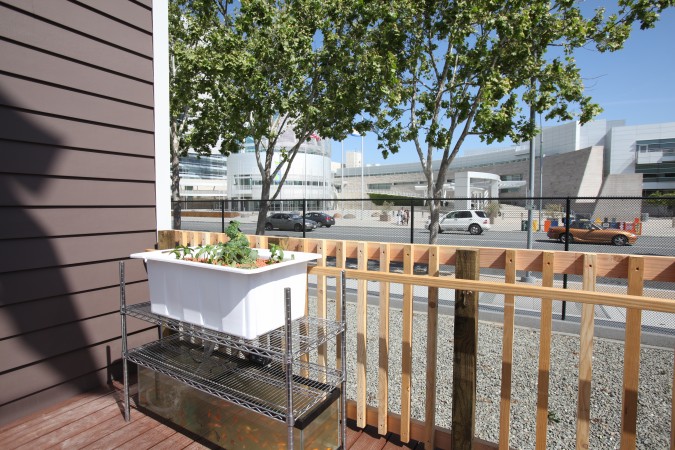Archive for the ‘Department of Energy’ tag
I built my first aquaponics system – you’ll never guess where it is
I’ve written about my friend Kevin Casey a few times before (January 7, 2011, January 9, 2011 and January 11, 2011). I met him in 2007 when he was one of the student organizers for the University of California Berkeley Business Plan Competition. I was a judge and financial sponsor for that competition, so we had plenty of opportunities to talk. We became friends on Facebook, and when he started posting status updates about his startup New Avenue, Inc., I got back in touch with him.
Kevin staged the ribbon cutting for his first house on January 8th, 2011. Soon after, the city of San Jose, California contacted Kevin and asked that he construct a custom house for a 9 month exhibit of green technologies called the San Jose Green Vision Clean Energy Showcase. This exhibit opened this month, in May, 2011. The location is directly across the street from the sparkling City Hall of San Jose.
Here’s the PDF brochure that San Jose is distributing about its Clean Energy Showcase.
Ever since I contacted Kevin in late 2010, I have been talking his ear off about my ideas for shipping container based green housing. One of the parts to my grand plans is to make it practical for residents to grow food at home. The most exciting and productive way to grow food in limited space with limited water is to raise fish and vegetables in symbiotic harmony. This technique is widely known by the word ‘aquaponics.’
Kevin approached me and asked if I’d like to set up a small demonstration aquaponics system on the front porch of his New Avenue demo green home. I jumped at the chance, as this gives me a great excuse to learn more about this and help a friend at the same time. Aquaponics is really popular in Australia, which is in the midst of an 11 year draught. Aquaponics systems use 1/10th the water required to grow vegetables in dirt. Since the world is ‘running out’ of fresh water, it makes sense to learn more about a system that makes such efficient use of water.
I put together a system with off the shelf parts I selected and modified personally. The result doesn’t look bad, but doesn’t look like a commercial polished product either. I am happy with the result for my first system. I used a wire shelf rack from Costco as the frame. I was concerned that infants could drown in a system that didn’t fully cover the water tank, so by setting the height of the first shelf to just over the height of the water tank, I eliminated that risk. You can see this safety feature in the picture above.
The water aerator and the timer are located in an exterior grade water resistant steel junction box fastened to the rear shelf. From there, the system is connected to a GFCI outdoor outlet on the rear of the house. While you can’t see it in the picture because I hadn’t installed it yet, the fish are fed automatically each day via a timed automatic fish feeder.
The vegetable bed is flooded with a foot of water from the fish tank 24 times a day. The flood/drain cycle takes about 18 minutes, and starts on the top of each hour. The pump consumes just 18 watts during a 15 minute per hour fill cycle. The extra 3 minutes is the time it takes for the growing bed to drain back into the fish tank.
The vegetable roots cleanse the water. Since the vegetables get all the water they can absorb, they grow faster than in dirt, up to 600% faster. The fish also grow faster than normal because they get so much clean and well aerated water. It’s a true win/win scenario. The main inputs are fish food and water to replace what is lost to transpiration and evaporation. On occasion, there are tiny inputs of a teaspoon or so of fluid to adjust the pH to keep everything happy. I understand that this is needed primarily during the first 6 weeks of operation, before the healthy bacteria have established themselves in the clay beads that the plants grow in.
I am no expert, but I’m learning a lot, and I appreciate the opportunity to learn on such a public stage. I’ve already met two people that have seen my system and want one of their own!
To learn more, read Backyard Aquaponics Magazine.
Special thanks to Sylvia Berstein, Founder and CEO of The Aquaponic Source, who helped me set up my first system and sold me some of the key parts. Her store is located in Boulder, Colorado, USA.

